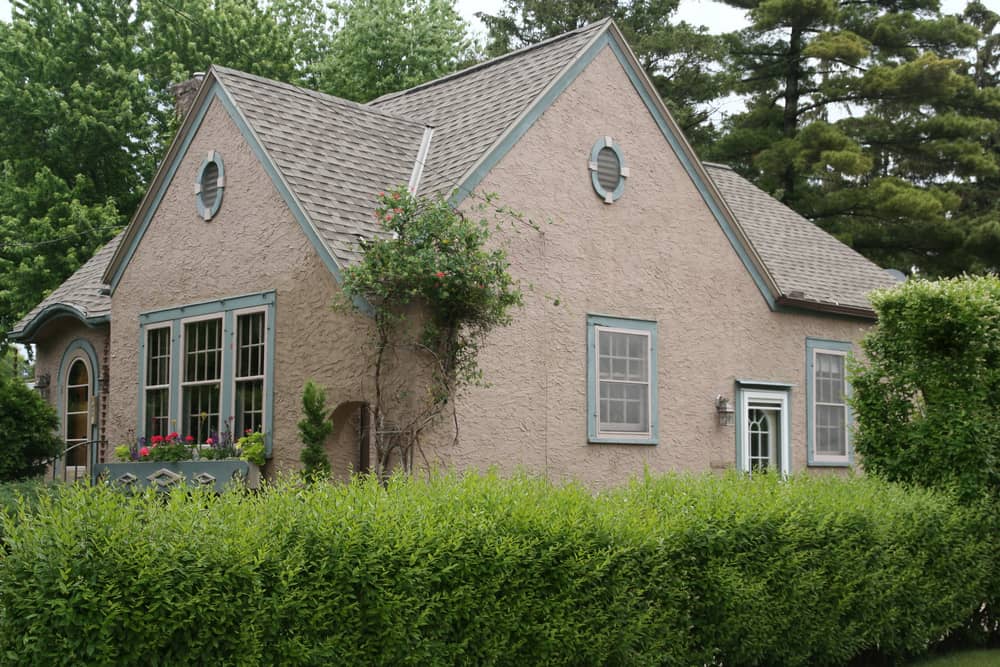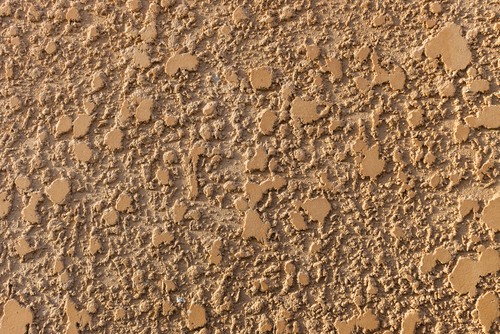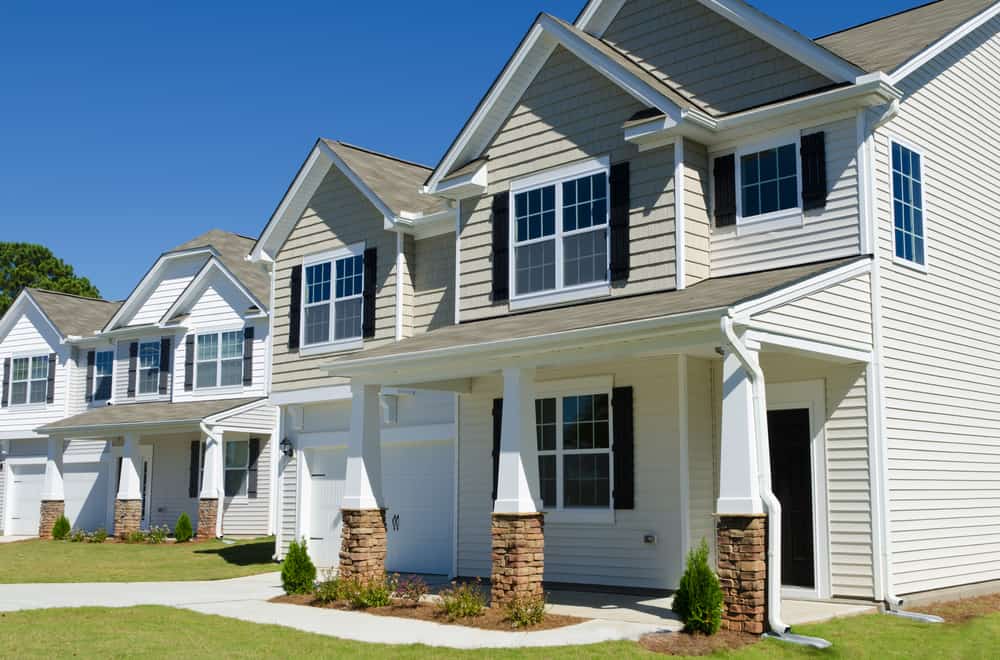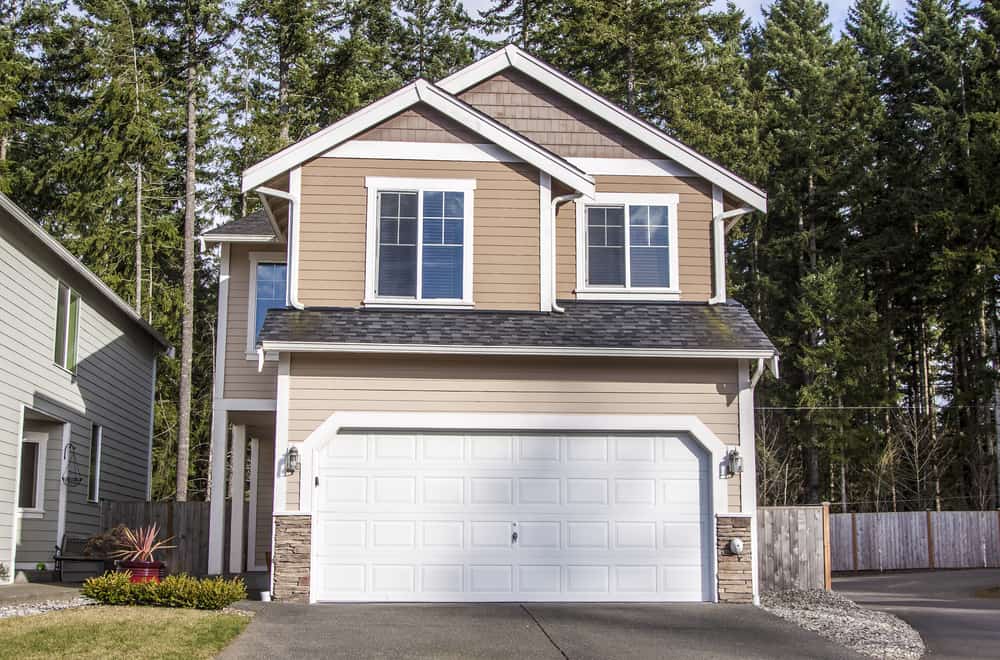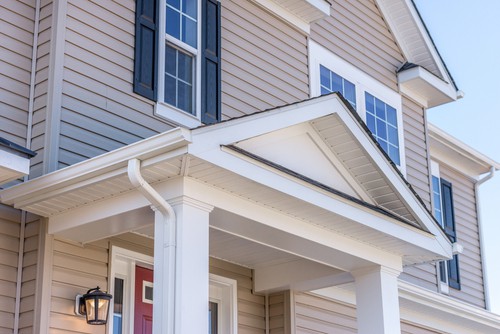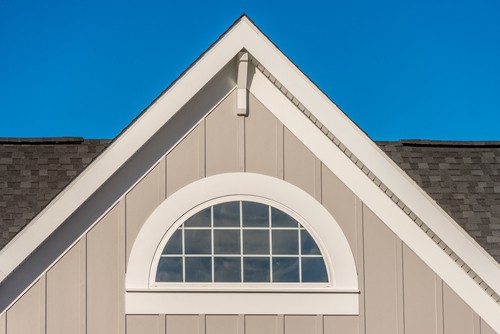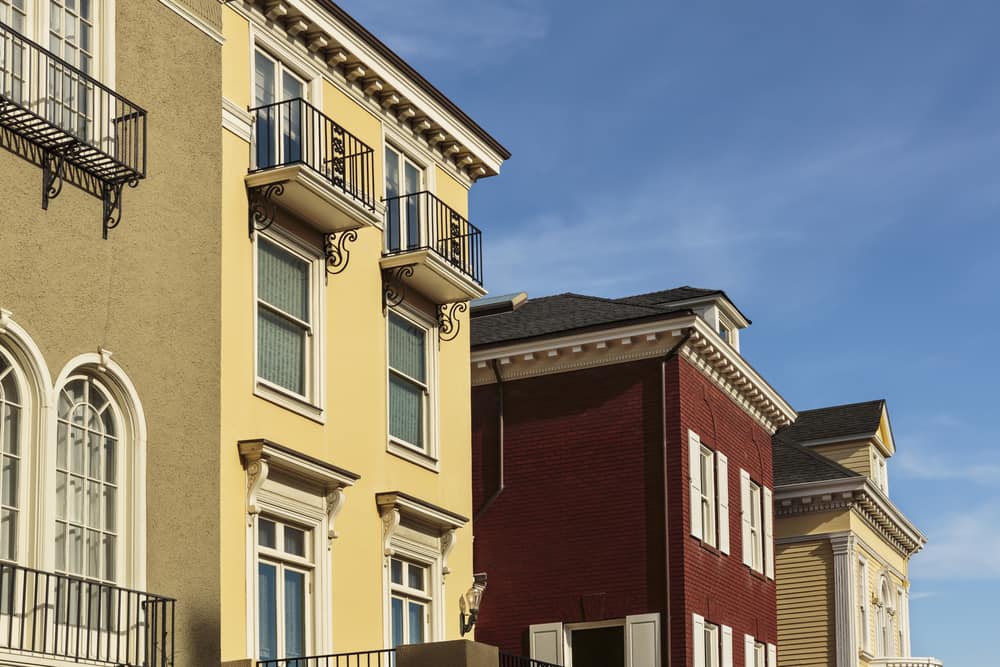Most homeowners pay a lot of attention to the exterior of their homes. It is probably the most crucial decision you can make about your home since its appearance significantly impacts its future value.
When choosing a material that will cover the exterior walls of your home, it is desirable to consider several factors. One of the dilemmas is whether to select stucco vs. vinyl siding. As always, it is necessary to consider the differences between these two options before making a final decision. Let’s see.
What Is Stucco?
People have been using stucco in construction since ancient times. It is a type of plaster with a finish, usually on the buildings’ exterior, but you can also find it in the interior design of business and living spaces.
The interior stucco was a mixture of marble dust, water, and lime in the past, which made it a smooth plaster. Constructors often shaped complex figures from this material and even painted them.
Recently, marble dust was replaced by sand in the stucco composition. Although you can use different components to make this mixture nowadays, you will only need:
- Sand
- Lime, obtained by firing limestone
- Water
It is necessary to mix these components until getting a smooth paste. Only then can you apply it over the surface or make a desirable shape. The stucco you get this way is strong and durable, but you can spot cracks in the mortar after a while. As lime is soluble, it will fill those cracks as soon as it gets wet.
History
Stucco has been known in art and architecture for over 9,000 years. There were reports that builders used this material to decorate public and private buildings during the Roman Empire. Ancient Romans also discovered that adding silicon dioxide and alumina strengthens the stucco.
Also, they shaped curved ceilings thanks to the knowledge that white limestone stucco was easy to process. Archaeologists found bathrooms made out of this material in a famous Hadrian’s villa that is under UNESCO protection.
The builders of ancient Greece also used this material. Historical sites show that stucco was present in Greek construction in 1,400 BC.
The presence of stucco in ancient Islamic art was significant, and constructors used it as decorative reliefs in the ancient Mesopotamia and Persia periods. You can still see it in the Great Mosque from the 9th century in Samara, Iraq.
In the Middle Ages, Europeans added eggs, malt, beer, milk, and hair to the mortar to help the bonding process, depending on the region. In any case, today’s stucco composition is different from that of ancient days, but it is still an attractive option for siding.
Modern versions
Today’s stucco is a mixture of Portland cement, sand, and water. Joseph Aspidin invented Portland cement that consists of iron, limestone, clay, and shale in 1824. This name came from a specific stone found on the island of Portland, near the British coast.
Even today, constructors use Portland cement instead of lime and mix it with sand and water. Unfortunately, this stucco type is less durable and can crack quickly.
There is another variant of the mixture that includes plastic cement. It is a combination of Portland cement, lime, sand, and water that provides the perfect gypsum mud.
The contemporary composition of the stucco is sand and plastic cement in a 3:1 ratio, mixed with 100 to 170 ounces (3 to 5 l) of water. The amount of water will depend on the density you want to get.
Exterior and interior type
You can distinguish between exterior and interior stucco. Basic principles such as mixing, painting, and applying materials don’t differ. However, the difference is in the materials used.
For the exterior structure, you should use materials that withstand adverse weather conditions, including heavy rain and intense sunlight. Before applying the primer, you need to add paper to protect the house’s interior from moisture.
On the other hand, internal stucco (plaster) typically doesn’t require waterproofing, except when you use it for bathroom walls.
What Is Vinyl?
Vinyl is a PVC material for the buildings and houses’ exterior cladding. It is practical for protection against adverse weather conditions, and it can beautify the external appearance of your home at the same time.
History
Since the day of the polyvinyl chloride (PVC) invention, when German chemistry expert Eugen Baumann and French physicist H.V. Regnault created it in 1872, vinyl has become a material irreplaceable in everyday use. The early form of this product was brittle and rigid, which limited its use.
The first patent for PVC belonged to a German chemist, Friedrich Klatte. He invented a new method of polymerization and managed to prepare polyvinyl acetate from acetylene gas.
However, no one saw any benefit and purpose of PVC until 1926, when Waldo Lonsbury Semon finds plasticized polyvinyl chloride. That made the material flexible and suitable for wide use. From that moment, vinyl expansion and its application in almost all aspects of life began.
Vinyl siding
Vinyl siding is a material for the exterior cladding of your home, often placed over rigid insulation. That way, it has the best energy efficiency. When deciding on vinyl, you will find:
- Wide range of colors
- Texture variety, including smooth and woody
- Edge selection, like straight, scalloped, and decorative
A variety of designs and styles were developed in the production of vinyl siding over time. Nowadays, you can find two standard options on the market:
Horizontal vinyl siding
It is the most common vinyl siding type in the US. Horizontal panels have a diverse range of patterns, meaning you will quickly find a design of your choice.
A disadvantage of this option is the possibility of leaking water into the inner wall. Luckily, you can prevent this by installing high-quality insulation and placing the panels correctly.
Vertical vinyl siding
Vertical vinyl siding initially decorated country houses and stables and quickly became trendy after a slight redesign. Since the typical profile for this facade type is made of planks and battens, you will need a little more time to install it.
Investing your time will pay off since this solution makes your home more attractive. Plus, it is an excellent way to create it unique and successfully differentiate it from other houses in the neighborhood with a standard horizontal design.
Stucco vs. Vinyl Siding
Luckily, you can find a significant material choice for the exterior cladding that will fit your home. This material will both protect the house from external influences and provide a beautiful appearance.
Both stucco and vinyl siding are excellent materials for this purpose, but it is advisable to consider all their advantages and downsides before making a final decision.
Durability
Both coverings are very durable and long-lasting. However, as the stucco applies in a minimum of three layers, it is up to 10 times thicker than vinyl siding.
Its structure is also more resistant to wind gusts, and it can withstand strength up to 80 mph (129 km/h), while vinyl can withstand gusts up to 70 mph (112.5 km/h). Also, stucco is more resistant to hail blows, thanks to its thickness. It will crack only if the pieces are really big.
With proper installation and maintenance, vinyl siding can last 20 to 40 years. On the other hand, the stucco will last from 60 to 100 years under the same conditions, making it a more permanent option.
Installation
Installing vinyl siding is quicker, requires less effort, and the price is lower. The panels come ready to install, and you can mount them on brackets on your own.
On the other hand, setting up a stucco is demanding, so hiring an expert to get it done is advisable. Since it is necessary to add three coatings, the structure will require more time.
Keep in mind that each layer needs to dry before applying the next one. There is one more problem. Any mistakes with the stucco are much harder to correct.
Maintenance
For you as a homeowner, this can be a determining factor when making a decision. Even though both materials don’t require excessive maintenance, it is advisable to wash the vinyl siding once a year. When you properly install it, this annual wash is the only maintenance this siding type requires.
On the other hand, the stucco will fade in the sun, so you need to repaint it occasionally. Also, you should pay attention to possible cracks appearing on its surface. Luckily, it is not complicated to solve this problem.
Cost
After choosing a material type, overall costs will be the next, often deciding factor. The price of vinyl panels usually significantly varies, but even the most expensive ones cost less than stucco.
Vinyl siding price ranges from a minimum of $6.5 to a maximum of $12.50 per installed 1 sq ft (0.09 m2). On the other hand, stucco will cost you an average of $14.50 per fully installed 1 sq ft (0.09 m2).
Summary
Vinyl siding is a more cost-effective choice due to lower installation and maintenance costs. In addition, it offers a variety of designs and a wide range of colors.
On the other hand, stucco has higher installation costs, and its maintenance will cost you more in the long run. However, its advantage is in its longevity and quality. Plus, it will bring a unique and beautiful look to your home.
